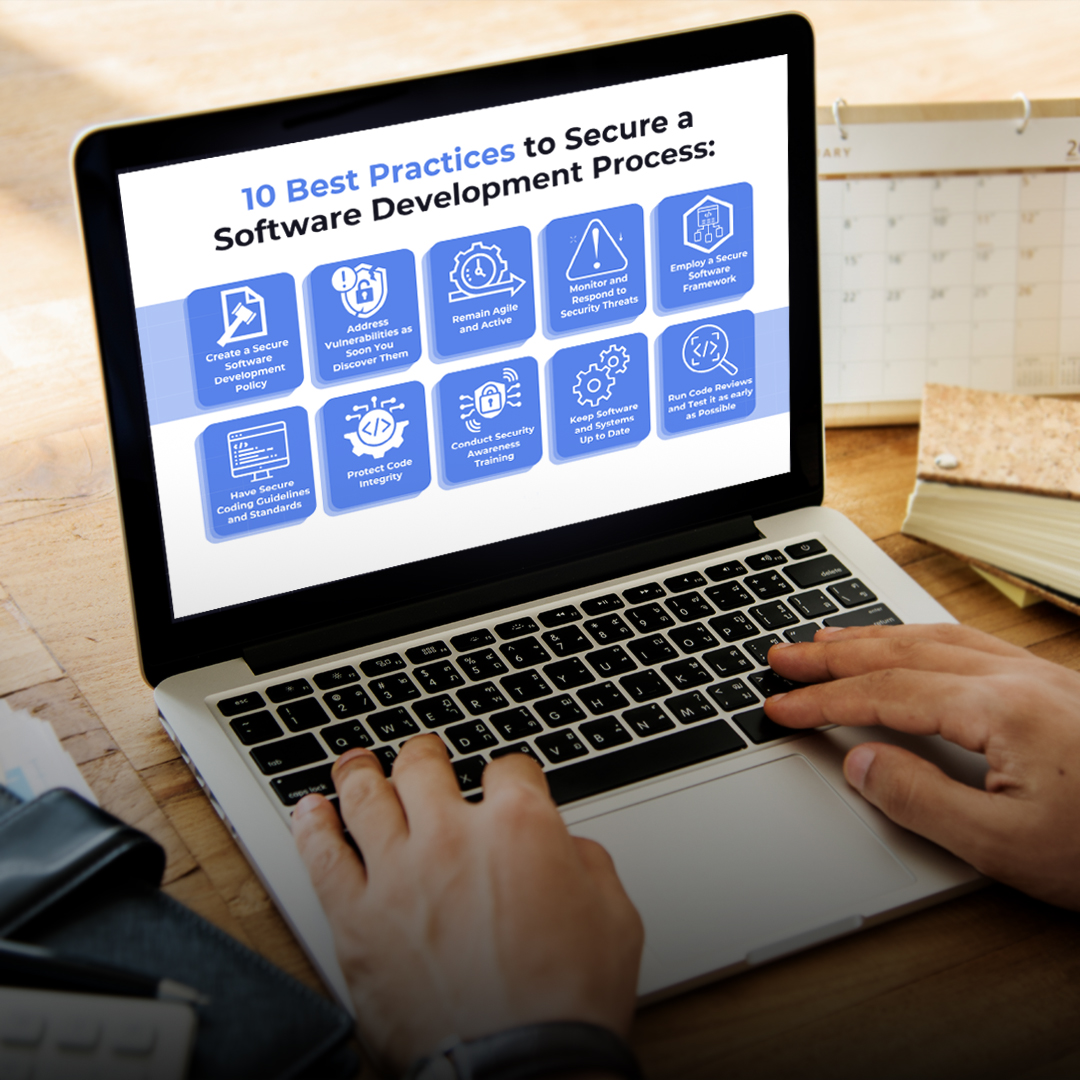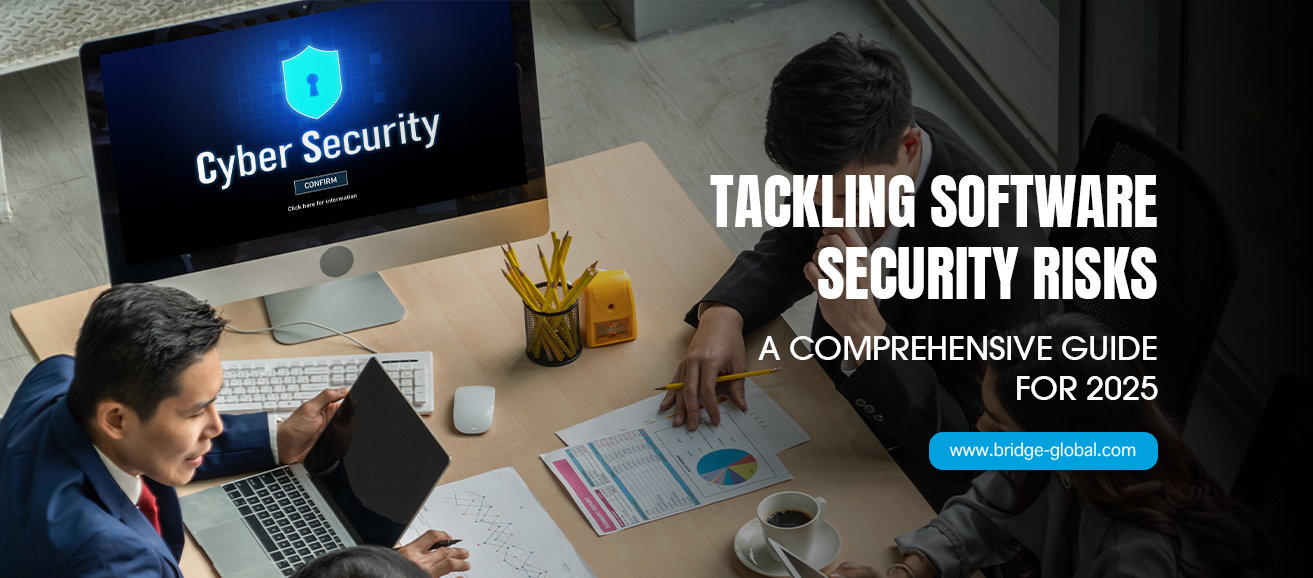Key Trends and Best Practices for Ensuring Security in Software Development
Software development is at the heart of the digital revolution, fueling innovation across various industries. However, the increasing frequency and sophistication of cyberattacks present a substantial threat to software application security and integrity. Software security risks can impact individuals, corporations, and governments alike. As we enter a new era, grasping the essentials of security in software development is essential for protecting our digital environments. In particular, custom software development requires a heightened focus on security to address unique vulnerabilities that may arise.
This blog post will explore what software security entails, the various security risks involved, and best practices to achieve security in software development. Additionally, we’ll highlight the key security trends to watch for in 2025, empowering developers to create applications that are secure, resilient, and trustworthy.
Understanding Security in Software Development
Software security focuses on identifying and mitigating security risks. These risks can vary, encompassing external threats such as cyberattacks and internal vulnerabilities stemming from coding errors, inadequate design, or other flaws within a software application. Essentially, software security acts as a protective barrier against numerous threats that, if left unaddressed, could lead to data breaches, financial losses, and a decline in user trust in the company.
Common Security Risks in Software Development
Understanding the most common security concerns faced by software developers is crucial before exploring best practices for secure software development. Here are some of the prevalent security risks encountered by software engineers:
1. Security Threats to Web Services
Ensuring the security of web services is crucial, as they often store sensitive user data and personal information. Malicious actors can exploit vulnerabilities in these services to gain unauthorized access to confidential information or perform unauthorized actions on the associated website. Implementing robust security measures and conducting regular vulnerability assessments are essential to mitigate these risks.
2. Insecure Password Storage
Secure password storage is a vital component of software security. Unfortunately, passwords are usually stored in ways that leave them vulnerable to theft and decryption through methods such as dictionary and brute force attacks. To mitigate the risk of unauthorized access, it is essential to use strong cryptographic techniques for password storage.
3. Risks of Maintaining Inactive Software Systems
When software applications are no longer actively developed or supported by a dedicated team, they become increasingly vulnerable to security risks. Exploiting these vulnerabilities allows hackers to gain unauthorized access to sensitive data and confidential information stored on the server, resulting in various security challenges.
4. Challenges Associated with Legacy Software
Legacy software presents distinct security challenges due to its outdated architecture. Often developed without adhering to secure coding practices and lacking regular updates, these systems become vulnerable to cyberattacks and data breaches. To safeguard against potential threats, it's essential to identify and address security vulnerabilities, consider upgrading to more secure alternatives, and migrate away from legacy systems.
5. Poor Code Quality
Poor code quality presents considerable risks in software development. Applications with poorly written code often hinder the implementation of effective security measures. Critical practices such as input validation, output encoding, error handling, secure storage, and adherence to secure coding principles are often overlooked, leaving the application susceptible to security breaches.
Best Practices to Ensure Security in Software Development
Cyber threats are becoming more advanced today. To safeguard digital assets and maintain customer trust, adopting a security-first approach in software development is crucial. Here are a few best practices for secure software development to strengthen your applications.
Prioritize Security Across the Organization
Security should be embedded across all levels of the organization. From developers to management, everyone must prioritize security and incorporate it into daily decision-making. This approach ensures that security is not an afterthought but a fundamental part of the entire software development process.

Collaborate with Security Experts
Engage with security experts during the initial project planning. Their expertise helps identify potential risks and recommend effective safeguards. By involving them from the beginning, you can proactively address security concerns and avoid expensive fixes later in the development process.
Keep Software Updated and Patched
Outdated software components can harbor known vulnerabilities that hackers may exploit. It's essential to regularly update and patch all software components, including third-party libraries, to reduce potential risks and ensure that your software remains secure.
Conduct Threat Modeling
Threat modeling helps you anticipate potential risks during development. By identifying vulnerabilities early, you can effectively apply the necessary security measures to defend against possible attacks.
Perform Thorough Code Reviews
Carefully review code to identify security vulnerabilities. Follow industry best practices to detect and resolve potential weaknesses, including input validation errors, improper authentication, and insecure data storage.
Implement Strong Authentication Mechanisms and Access Controls
Use strong authentication methods, like multi-factor authentication, to ensure that only authorized users can access sensitive features and data. In addition to that, enforce strict access controls to limit user privileges. These security measures help reduce the impact of a security breach.
Ensure Effective Error Handling
Effective error handling is crucial for preventing data leaks and safeguarding data privacy. Avoid disclosing sensitive error messages that could expose system details to attackers. Instead, provide users with generic error messages to protect your application's integrity.
Educate Developers on Security
Provide ongoing training for your developers on secure coding practices and emerging threats. Keeping them informed about the latest security measures enables them to write more secure code and remain alert to new attack vectors.
Perform Security Assessments & Penetration Tests
Consistently assess your software for potential security vulnerabilities by conducting thorough security evaluations and penetration testing. These tests simulate real-world attacks to uncover weaknesses, offering valuable insights into areas that require improvement.
Monitor Security Logs Frequently
Regularly review security logs and audit trails to identify unusual or suspicious activities. Early detection of security incidents can help prevent further damage and provide insights into the nature of the attack.
Use Secure Coding Frameworks and Libraries
Leverage trusted databases, frameworks, and libraries that are known for their security. Utilizing these tools can significantly lower the risk of introducing vulnerabilities into your codebase.
Secure Software Development: Emerging Trends & Strategies

DevSecOps
Traditionally, security has been viewed as a separate phase in the software development life cycle (SDLC). However, the future is to integrate security throughout the entire process. DevSecOps represents a cultural shift that fosters collaboration among development, security, and operations teams, aiming for security automation at every stage of the SDLC. By embedding security into the development pipeline, organizations can make it an essential part of the process rather than an afterthought.
Shift Left Security
A fundamental principle of modern secure software development is "shift left" security. Traditionally, security testing happened late in the development cycle, resulting in delays and higher costs. The shift left approach emphasizes integrating security testing early in the SDLC, allowing developers to identify and address vulnerabilities at the outset. By implementing continuous testing throughout the development process, software development companies can prioritize security at every stage.
Microservices Architecture
As organizations shift from monolithic architectures to microservices, security considerations must evolve. Microservices architecture breaks applications into smaller, independently deployable services, enhancing scalability and flexibility but also introducing new security challenges. The future of secure software development in this environment involves implementing stronger isolation mechanisms and adopting a zero trust security model.
This involves ensuring that each microservice validates the identity of any service it communicates with, thereby fostering a more resilient and secure ecosystem.
Zero Trust Security Model
The traditional security model, which assumes that everything within the network is trusted, is no longer adequate in today’s evolving threat landscape. The zero trust security model challenges this notion by asserting that no entity, whether internal or external, should be trusted by default. Moving forward, organizations will increasingly embrace a zero trust architecture, necessitating continuous verification of user identities, devices, and applications. This model adheres to the principle of least privilege, granting access only to the resources necessary for specific roles. By doing so, it reduces the attack surface and mitigates the potential impact of security breaches.
Artificial Intelligence and Machine Learning
As cyber threats grow more sophisticated, the use of artificial intelligence (AI) and machine learning (ML) in security measures is becoming increasingly common. These technologies can significantly enhance threat detection, automate incident responses, and strengthen overall security. In the future, we can anticipate the deployment of AI-driven tools that analyze large volumes of data to uncover patterns, anomalies, and potential risks. Software development companies can integrate these technologies into your systems, facilitating quicker and more accurate decision-making, bolstering security teams' capabilities, and helping organizations stay ahead of cyber adversaries.
Container Security
Containers are now essential in modern software development, offering a lightweight and portable environment for applications. However, as their usage increases, the importance of strong container security measures also rises. In the future, secure software development will prioritize the use of container orchestration tools that come with integrated security features to ensure proper configuration and isolation of containers. Organizations will also emphasize regular vulnerability scanning and continuous monitoring of containerized applications to tackle the unique security challenges associated with this technology.
Supply Chain Security
The software supply chain includes the processes of building, testing, and deploying software. As organizations increasingly depend on third-party libraries, frameworks, and components, securing this supply chain is vital for overall security. In the future, organizations will focus on enhancing visibility and control over their software supply chain. This entails rigorously evaluating third-party components, actively monitoring for vulnerabilities, and establishing mechanisms to detect and respond to security incidents. Ensuring a secure software supply chain is crucial for maintaining the integrity of the final software product.
Wrapping Up
Cybersecurity in software development is being strengthened through the convergence of trends and best practices, leading to more sophisticated and trustworthy approaches that protect systems, data, businesses, and users. It’s no surprise that developers, investors, and organizations are actively seeking information to stay current with these evolving security standards. Gone are the days when the primary focus was solely on development costs and timelines. Today, it’s about balancing costs, timelines, and security.
For assistance in navigating the complexities of secure custom software development, don't hesitate to reach out to us!



